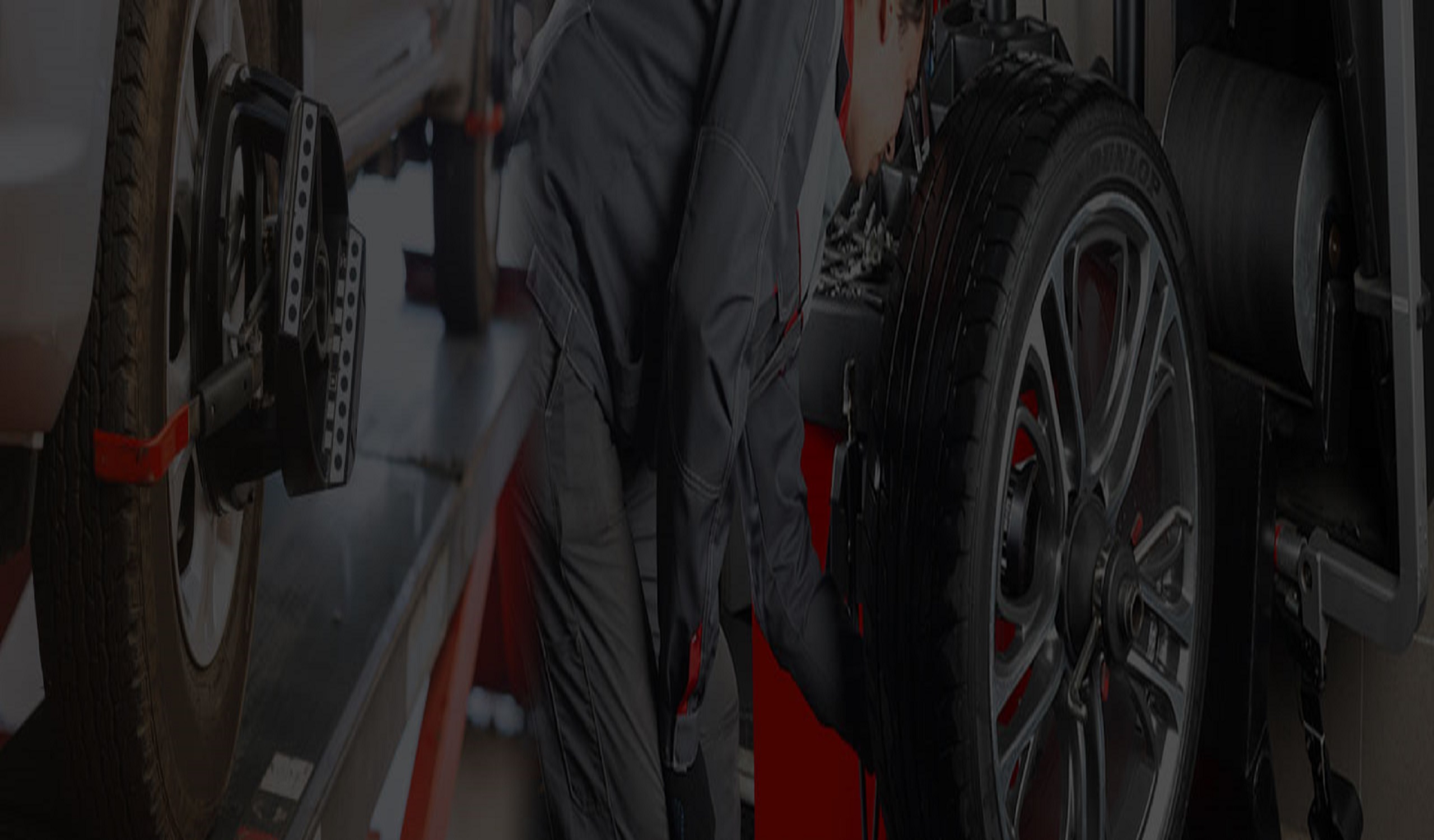 Wheel balancing is a process that involves equalizing the weight of a wheel and tyre assembly. This is to ensure that it spins smoothly without any vibration. This is important for maintaining the safety and performance of a vehicle. As unbalanced wheels can cause uneven tyre wear, reduce handling and steering control, and lead to other mechanical issues.
Wheel balancing is a process that involves equalizing the weight of a wheel and tyre assembly. This is to ensure that it spins smoothly without any vibration. This is important for maintaining the safety and performance of a vehicle. As unbalanced wheels can cause uneven tyre wear, reduce handling and steering control, and lead to other mechanical issues.
The following are the steps involved in wheel balancing:
Inspection: The technician will begin by inspecting the wheels and tyres for any visible damage, such as dents, cracks, or bulges, as well as any signs of wear or uneven tyre wear.
Mounting the Wheel: The wheel and tyre assembly is then mounted onto the wheel balance. Which is a machine designed to measure the weight distribution of the wheel.
Initial Measurement: The machine will take an initial measurement of the weight distribution of the wheel, and identify any areas where there may be an imbalance.
Correction: To correct any imbalances, the technician will attach small weights to the wheel in specific locations. This depends on the results of the initial measurement. These weights will offset any heavy spots and help to balance the wheel.
Verification: Once the weights have attached, the machine will take another measurement to verify that the wheel is now balanced. The technician will then make any necessary adjustments to ensure that the wheel gets balanced correctly.
Test Drive: Finally, the vehicle will be test driven to ensure that the wheels are spinning smoothly and there is no vibration or other issues.
Causes Of Wheel Imbalance
One of the most common causes of wheel imbalance is uneven tyre wear. Over time, the tyres on your vehicle will experience normal wear and tear, but if this wear is not even, it can lead to imbalanced wheels.
Another common cause of wheel imbalance is a damaged or bent wheel. If you hit a pothole or curb, for example, this can cause your wheels to become misaligned or even bent, leading to imbalanced wheels. Additionally, loose or worn-out wheel bearings can cause your wheels to wobble, which can also result in wheel imbalance.
Another less common but still possible cause of wheel imbalance is an issue with your vehicle’s suspension system. If your suspension gets damaged or worn, it can cause your wheels to become misaligned, leading to imbalanced wheels.
Finally, improper wheel installation can also lead to wheel imbalance. If your wheels are not installed correctly or if they are not torqued to the appropriate specifications. This can result in imbalanced wheels.
Why Wheel Balancing is Necessary?
Here are some of the main reasons why wheel balancing is necessary:
Improve Handling and Stability
Wheel balancing helps to evenly distribute the weight of your vehicle, making it easier to handle and increasing overall stability. This is particularly important when driving at high speeds or making sharp turns.
Increase Tyre Life
If your wheels are out of balance, it can cause your tyres to wear unevenly, which can reduce their lifespan. By balancing your wheels, you can ensure that your tires wear evenly and last longer, which can save you money in the long run.
Reduce Vibrations
When your wheels are out of balance, it can cause vibrations that can get felt throughout the vehicle. This can be uncomfortable for passengers and can even cause damage to other parts of your vehicle over time.
Better Fuel Efficiency
If your wheels are out of balance, it can cause your vehicle to work harder, which can reduce fuel efficiency. By balancing your wheels, you can improve the efficiency of your vehicle, which can save you money on gas in the long run.
Safer Driving
When your wheels are properly balanced, it can help to reduce the risk of accidents on the road. Balanced wheels provide better traction and stability. Which can help to prevent accidents caused by sudden swerves or skids.
Here are some things to remember while performing wheel balancing:
Proper Equipment: It is important to use the right equipment when performing wheel balancing. This includes a quality wheel balancer, as well as the necessary weights, cones, and adapters.
Before balancing your wheels, it is important to check for any damage or wear. This includes inspecting the tyres for cuts or punctures, checking the rims for bends or cracks, and inspecting the valve stems for any damage.
Clean Wheels: Make sure to clean your wheels thoroughly before balancing them. Any dirt or debris on the wheels can interfere with the accuracy of the balancing process.
Accurate Weights: When adding weights to your wheels, make sure that they are accurate and properly placed. Improperly placed weights can lead to imbalanced wheels and cause further issues down the road.
It is important to have your Wheels Balancing Merthyr Tydfil regularly, as even small imbalances can cause significant issues over time. Most experts recommend having your wheels balanced every 6,000 to 8,000 miles, or whenever you notice any signs of vibration or uneven tyre wear. Proper wheel balancing can help to extend the life of your tyres, and improve fuel efficiency. It also, enhance the overall safety and performance of your vehicle.

